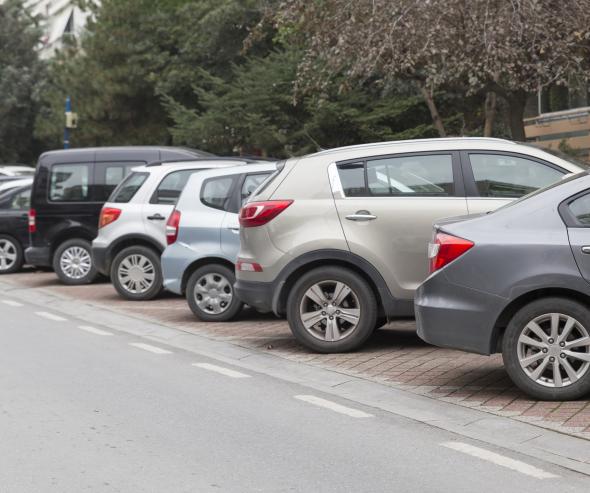The Autorité de la concurrence clears the acquisition of joint control of the company Bernard Participations SAS by the company Emil Frey Motors France and the company Fiber

This transaction led the Autorité to review its method for analysing mergers in the motor vehicle distribution sector in order to adapt it to developments in that sector.
A transaction referred by the European Commission
The European Commission referred the examination of the acquisition of joint control of the company Bernard Participations SAS by the companies Emil Frey Motors France and Fiber to the Autorité de la concurrence, upon its request. The Commission decided that the Autoritéwas best placed to examine the transaction given the position of the companies in the motor vehicle distribution markets in France and the potential effects on several local markets.
Parties to the transaction
Emil Frey Motors France (formerly PGA Motors SAS) is a French subsidiary of the Emil Frey group, which is active, in France and in several countries in the European Union, in all motor vehicle distribution markets.
The non-commercial company Fiber is a holding company that controls, jointly with the company Alcopa NV prior to the transaction, the company Bernard Participations. Bernard Participations is a company that is active, in France, in all motor vehicle distribution markets.
The transaction involves the acquisition, by Emil Frey, of the controlling minority interest in Bernard Participations that is currently held by Alcopa NV. Following the transaction, Bernard Participations will therefore come under the joint control of Emil Frey and Fiber.
Markets concerned by the transaction
The Autorité's past decisions have identified seven markets within the motor vehicle distribution sector, including the distribution of new motor vehicles to individuals, the distribution of new motor vehicles to professionals and the distribution of used motor vehicles.
The examination carried out demonstrated that a more detailed segmentation of these markets would not be relevant at this time, as the various assumptions made have not been confirmed by the operators (manufacturers and retailers) questioned.
The examination of the file led the Autorité to modify the geographical delineation for the motor vehicle distribution markets as well as the methodology for analysing these markets.
- Local catchment area replaces département in determining the positions of the parties to the transaction
The analysis of the transaction confirmed that the motor vehicle distribution markets had a local dimension. Indeed, despite the increasing use of the Internet in the customer journey, the examination demonstrated that the existence of a dense network of physical sales outlets remained, at this time, decisive in this sector.
However, the Autorité decided that the département-based analysis performed to date did not take into account the real behaviour of purchasers on these markets.
On the basis of a detailed investigation, the Autorité adopted a new delineation for local motor vehicle distribution markets corresponding to catchment areas defined by the journey times that consumers are prepared to undertake to purchase a vehicle (namely between 30 and 60 minutes depending on the markets concerned).
- Market shares no longer defined as the number of registrations at the level of département, but rather as the number of sales outlets in the catchment area
The incorporation of this new geographical delineation for the markets therefore led the Autorité to adapt its competitive analysis method.
Prior to this decision, the Autorité principally relied on registration data to estimate the position of operators in the sector. These data, available solely at the level of the département, made it possible to estimate the sales volumes achieved by operators active in a given département. It was on this basis that the Autorité defined the market shares of operators and ruled on the risks to competition generated by notified mergers.
From now on, the Autorité will analyse the density of the network of operators concerned and their position, in terms of the number of sales outlets in the local catchment area, in order to judge whether a joint purchasing agreement raises concerns regarding competition. The analysis of the Autorité is therefore currently based on estimating a “market share” in proportion to the sales outlets held in a local area by the parties to the transaction.
This method makes it possible both to take into account the real behaviour of consumers, as the local market is defined by a journey time and no longer by administrative boundaries, and to judge whether consumers will have, after the transaction, alternative sales outlets to those of the parties within the area in which they will make their purchases.
Bearing in mind the sometimes modest size of the stakeholders in the sector and the frequency of operations, the Autorité has selected the methodology that guarantees the best understanding of the competitive dynamic on the basis of available, easy-to-use information regarding the parties, while ensuring that the notification process does not become more onerous.
In addition, as this methodology is based on the actual structures of local markets, it offers the possibility of adapting, where necessary, the approach to local contexts where such a change is justified (French overseas departments and regions, or large cities, for example).
Following its competitive analysis according to the newly applicable methodology, the Autorité cleared the transaction without conditions.
- The full text of decision 19-DCC-42 of 12 March 2019 will soon be available for consultation on the Autorité de la concurrence website.
-> Press contacts: Bertille Gauthier +33 1 55 04 00 39 / Email
Chloé Duretête + 33 1 55 04 01 20 / Email